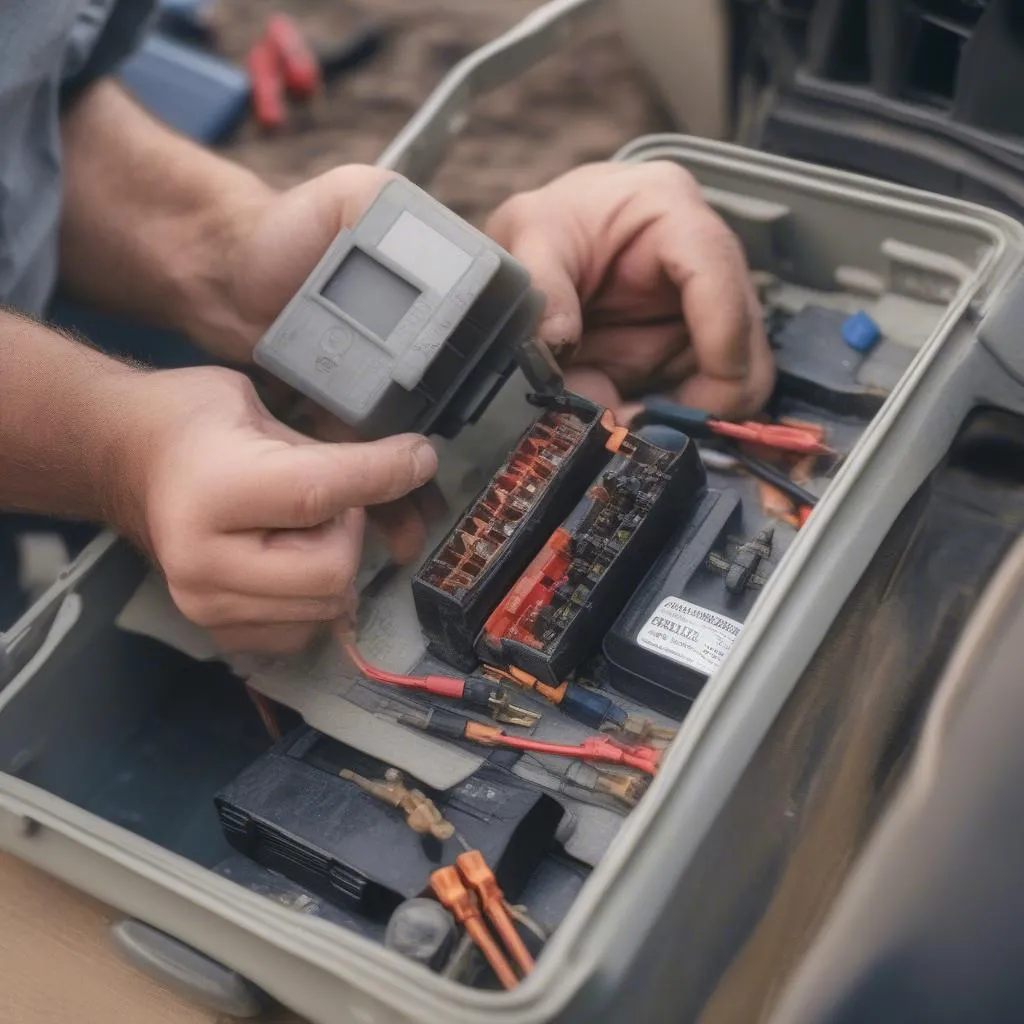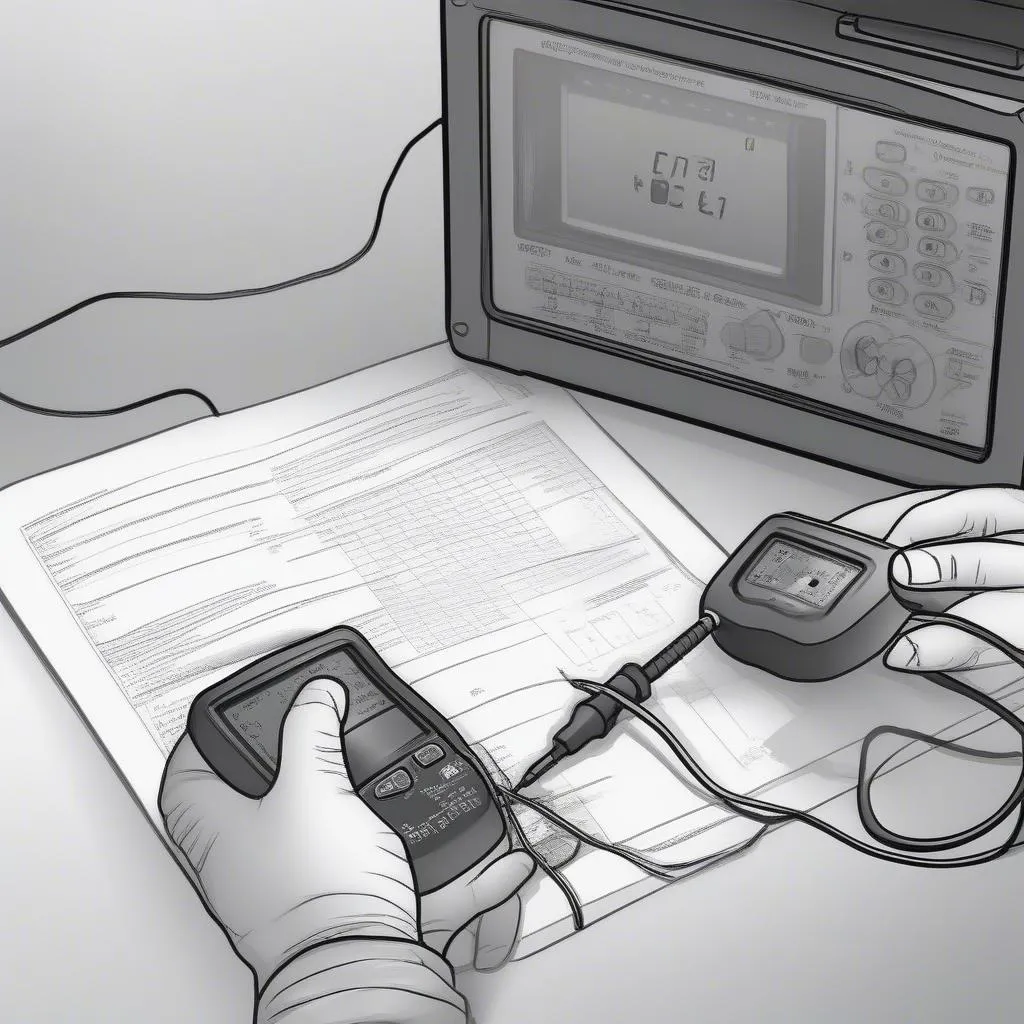Imagine this: You’re driving down the road, and suddenly your car starts acting strange. The engine light turns on, and you pull over to check what’s wrong. You grab your trusty OBD2 scanner, plug it into the port, and… nothing. Your scanner won’t connect. What’s the problem? It could be a blown Obd Port Fuse.
The Importance of the Obd Port Fuse
The OBD port, or On-Board Diagnostics port, is a crucial part of your car’s diagnostic system. It allows mechanics and car owners to access the car’s computer and retrieve important data like trouble codes, engine performance readings, and more. The OBD port fuse is a safety device that protects the OBD port and the wiring leading to it from being damaged by an electrical overload.
Why Does the Obd Port Fuse Blow?
A blown OBD port fuse can be caused by a variety of reasons, including:
- Short Circuits: A short circuit occurs when electricity takes an unintended path, often due to frayed or damaged wiring.
- Overload: If too much electricity flows through the OBD port fuse, it can blow.
- Faulty OBD2 Scanner: Sometimes a faulty OBD2 scanner can cause a surge in electricity that blows the fuse.
- External Factors: Harsh environmental conditions like extreme temperatures or moisture can also cause a fuse to blow.
How to Check and Replace the Obd Port Fuse
Finding the Fuse:
The location of the OBD port fuse varies depending on the make and model of your car. You can find the location in your car’s owner’s manual, or you can search online for your specific vehicle model.
Replacing the Fuse:
- Locate the fuse box.
- Identify the fuse labeled for the OBD port or “DLC” (Data Link Connector).
- Carefully remove the blown fuse.
- Insert a new fuse with the same amperage.
Tip:  OBD Port Fuse Replacement It’s important to use a fuse with the same amperage as the original fuse. Using a fuse with a higher amperage could cause damage to your car’s electrical system.**
OBD Port Fuse Replacement It’s important to use a fuse with the same amperage as the original fuse. Using a fuse with a higher amperage could cause damage to your car’s electrical system.**
Troubleshooting a Blown Obd Port Fuse
If you’ve replaced the fuse and it’s still blowing, you need to investigate the underlying cause. Here are some steps you can take:
- Inspect the OBD Port: Check for any signs of damage or corrosion.
- Check for Short Circuits: Examine the wiring leading to the OBD port for any signs of fraying or damage.
- Test the OBD2 Scanner: Make sure the scanner you’re using is working properly.
Other Common Obd Port Fuse Questions
“What fuse is for the OBD port on a 2010 Toyota Camry?”
You can find the OBD port fuse location in your car’s owner’s manual or online.
“Can I use a different type of fuse for the OBD port?”
No, using a different type of fuse can be dangerous and cause damage to your car’s electrical system.
“What happens if the OBD port fuse blows?”
If the OBD port fuse blows, you won’t be able to connect an OBD2 scanner to your car. This can make it difficult to diagnose problems with your car, as you won’t be able to access the car’s computer system.
Need More Help?
If you’re still having trouble with your OBD port fuse, or need help with diagnostics tools, feel free to contact us via Whatsapp at +84767531508. We have a team of certified automotive technicians ready to assist you 24/7.
 OBD Port Fuse Repair
OBD Port Fuse Repair
Conclusion
The OBD port fuse is an essential safety device that protects your car’s electrical system. If you’re having trouble connecting your OBD2 scanner, check to see if the fuse is blown. If it is, replace it with a fuse of the same amperage.
We hope this article has been informative. Please leave a comment below if you have any questions. Don’t forget to check out our other articles on automotive technology and maintenance, like our guides on fuse location for [insert specific model year and make of car].